For the last two weekends in a row, I’ve made the unfortunate choice to watch two bleak and seemingly pointless movies—first, Ida (2013), about a girl who’s about to take her vows and become a nun in desolate post-WWII Poland; and second, Prisoners (2013), which has become somewhat infamous because of its ambiguous ending.
On the surface, the two movies have seemingly little to do with each other. After all, the subject matter couldn’t be more different. Ida is shot in dramatic black-and white, is relaxingly avant-garde, and feels more like a theater production than a film. Prisoners, on the other hand, begins with the kidnapping of two little girls—on Thanksgiving Day, no less—in suburban contemporary America. Yet each movie left me reeling with dissatisfaction, and because my emotional reaction was strangely similar, I decided that the two films might have more in common than I initially thought.
[spoilers throughout]
Theme #1: Foreboding Openings
Regardless of any qualms I have with the film, Ida is visually stunning. The film opens with a high-angle shot of Ida, her face fixed in adoring concentration. The camera cuts away several seconds later and we realize that object of her affection is a statue of Jesus. The camera work in Ida is nothing short of genius; every shot, every sequence, is a metaphor for what’s taking place in Ida’s mind. Throughout the film, Ida says very little, to the point that it’s frustrating. What is she thinking? What’s going through her head? Why isn’t she reacting more strongly to the tragedy unfolding around her? Painstakingly and artfully composed, the camera rarely affords the audience full view of a face, situation, or place; instead, it mimics Ida’s naïve interactions with the world, as well as the difficult decisions she must make regarding heritage and faith.
Prisoners, despite its violent tone, has a similar, eerily calm, opening sequence: A still shot of the woods slowly morphs from black-and-white to muted color, overlaid with Hugh Jackman whispering the Lord’s Prayer as his son prepares to shoot a deer. The movie transitions to an unthinkingly cheerful, all-American Thanksgiving celebration very quickly thereafter, but the strangeness of the opening shot persists. It’s a harbinger in the most subtle sense—an unexpected warning, especially considering how the rest of the movie develops. Unlike Ida, Prisoners is shot in the more typical, gratuitous North American style. Faces are clearly displayed, and the camera is actively engaged in furthering the plot (as opposed to being used primarily to frame shots in unusual, aesthetically pleasing ways), yet in both Ida and Prisoners the camera is reluctant to reveal information.
Theme #2: Blending of contrasting emotions
Prisoners quickly denigrates into something frightening and tense, as one would expect from a movie about the violent abduction of children, but Ida is also emotionally and visually distressing. Ida frequently blends the beautiful with the sorrowful, such that even seemingly happy moments are undermined by a circumspect camera. The characters often find themselves occupying only a fraction of the frame, such as in the above screenshot, where Ida has a rare, but hopeful, romantically-slanted conversation with a young musician. Even though the window behind them is gorgeous and elaborate, its rigid structure and pattern serve as reminders of the moral and societal constraints to which Ida, in particular, feels bound. One could also argue—and I do not believe that this would be an exaggeration, given the dramatic tone and setting of the film—that the small stature of the characters in relation to their surroundings is meant to illustrate the minuteness (and pointlessness) of human experience. Even in her most liberated stage, Ida is constantly reminded of the smallness of her existence. When she dares to take off her habit, put on a dress and a pair of heels, and go dancing with her musician, she’s still trapped behind a parabolic doorway, band instruments, and an intricately tiled floor. Taking all this into consideration, Ida’s final decision regarding God and service is slightly less incomprehensible.
Just as Ida is desperate to maintain control, so, too, is Hugh Jackman’s character (Keller Dover) in Prisoners obsessed with obtaining answers—to the point that he engages in vigilante justice. Shortly after that foreboding Thanksgiving meal, and shortly before dessert, Keller Dover discovers that his daughter, Anna, has gone missing along with her friend Joy, daughter of Franklin (Terrence Howard) and Nancy Birch (Viola Davis). A suspicious-looking RV and its simpleton driver, Alex Jones (Paul Dano) is immediately identified as the likely culprit, and soon afterwards, detective David Loki (Jake Gyllenhaal) gets involved. It’s striking, though, how closely the happiest scenes in Prisoners resemble some of the most disturbing ones, a feature that the film shares with Ida. Towards the end of the film, when the parents are reunited with their daughters in scenes that should be peaceful and full of relief, there is instead persistent anxiety and tension. The girls seem deeply disturbed by their experiences, and it’s unclear whether Dover’s daughter, Anna, will be able to communicate normally.
Theme #3: Color (or lack thereof)
Though Prisoners is obviously filmed in color, and Ida is seemingly more daring in its use of black-and-white, it is precisely the lack of color that cements Prisoners’ status as a psychological thriller and crime drama.
Before the kidnapping, the Dover family and the Birch family live in a dreary, chilly, and rain-soaked suburban neighborhood. After the kidnapping, they continue to occupy the same de-saturated spaces, filling in the colorless cracks with anxiety, fear, and violence. The ghostly detective David Loki is permanently ensconced in dark clothing, and is often found peering through candlelit darkness, rain-splattered windows, and gloomy doorways.
A sense of barrenness pervades both films. In Prisoners, terror and desolation seep throughout the wintry Pennsylvania landscape. In Ida, characters interact in the shadow of Poland’s pre-war vitality. Ida is nihilistic in the sense that suffering is understood to be the status quo, while Prisoners delves deeper and deeper into irrationality as the convoluted plot progresses.
Theme #4: Desperation & Violence
Both films have their fair share of violence (Prisoners especially so), and in both cases, that violence stems from fear and frustration. Ida has been living in the convent since she was a young child; her parents are dead, but an aunt of hers writes from time to time. One day, the aunt, Wanda, decides that she would in fact like to meet the child of her dead sister. Ida leaves the convent and meets the extremely cosmopolitan Wanda, who drinks, smokes, and sleeps around with alarming liberty. When Wanda eventually realizes that there will be no convincing Ida to abandon her desire to become a nun, she becomes depressed, drinks even more than normal, and one day abruptly decides to throw herself out the window.
Looking back, I should have known that Wanda was going to kill herself. For some reason, though, the cool black-and-white tone, somber storyline punctuated with humor and life, and grim yet almost dreamlike aesthetic fooled me. I should have also anticipated violence in Prisoners, given that Hugh Jackman was cast as the overprotective father trope. But nothing could have prepared me for the torture.
I won’t discuss it in detail here (or even display one of the more gratuitous photos), but the torture in Prisoners is equal to that of Zero Dark Thirty. In fact, water torture makes an appearance in both films. In contrast to the elegant sorrow and ennui of Ida, Prisoners is brash and unforgiving. Hugh Jackman’s performance is chilling. I had trouble falling asleep afterwards.
Theme #5: Tragic and Ambiguous Endings
And then we come to the endings of the films. Ida is a tragedy through and through; it’s almost formulaic in that regard, but the ending came as a shock nonetheless. Following her aunt’s death, Ida decides to explore life. She tentatively frees her red hair, tries on her aunt’s slinky black dresses and heels, and has a romantic dalliance with the musician. She seems to be enjoying her self-imposed liberation, yet make no mistake–Ida has calculated exactly how much of life she wants to experience. When Ida suddenly appears dressed in the old black dress and constricting habit, there was a palpable, collective sigh of disappointment in the movie theater. We have, in the end, sided with the worldly Aunt Wanda. Why would Ida lock herself away? The film, as usual, is not forthcoming with an answer.
Prisoners is similarly frustrating. All of the plot points are resolved except one: the girls are returned to their parents; the detective has a dramatic showdown with Melissa Leo; and even poor Paul Dano is rescued from his torture chamber. But the ending subverts expectations, insofar as it refuses to provide that sense of satisfaction from a job well done. Then again, Prisoners is not a happy movie, so why wouldn’t it have a dark and ambiguous ending?
Two semi-heroic characters in the near-darkness. Two open, disappointed faces. Two utterly dissatisfying, disturbing endings.
Ida, overall rating: B+
Prisoners, overall rating: B


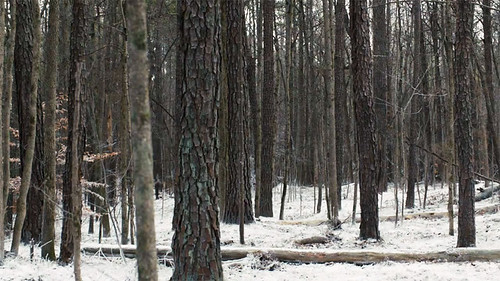
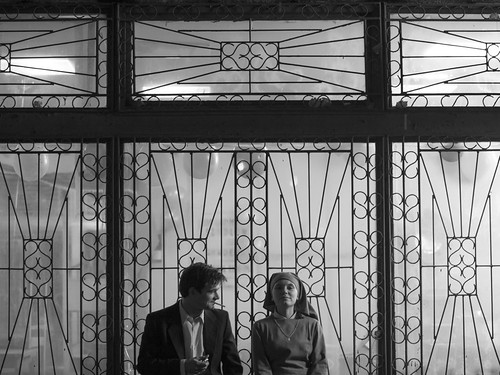
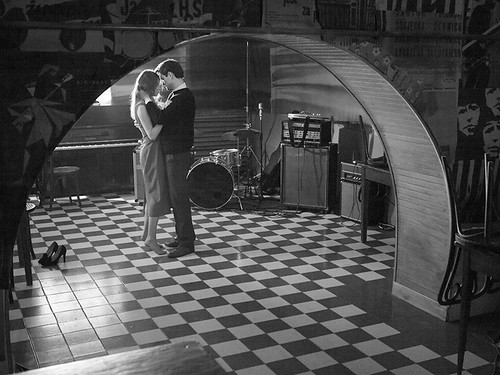



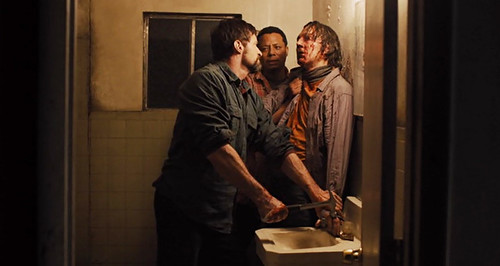
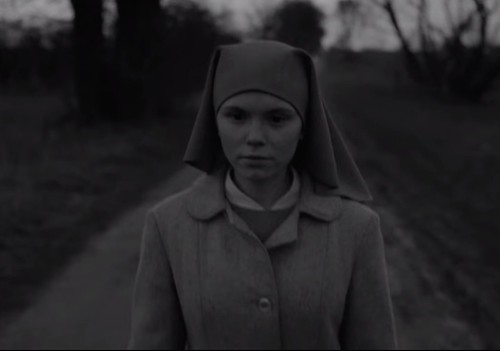
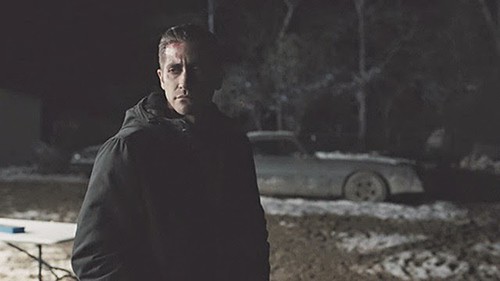
[…] of the Galaxy, Boyhood, Under the Skin, and, yes, even Interstellar. It’s true that Ida was very good, but I thought it lacked something, and I’m hard-pressed to find any major […]
Just saw Prisoners days ago. I didn’t know about Ida. I’m not sure if I’m gonna like that movie. Looks like a slow-moving film. I am curious of how visually stimulating it is though. Writers find the end often the hardest to put pen to paper.
My problems with Prisoners is when the movie stalled us with that pig guy who buys children’s clothes. The one who shot himself. I don’t fully understand why he just can’t talk. Two “suspects” that wouldn’t talk in one movie is overkill. 😀 I thought that part of the movie is good for the thrill but very pointless, making the movie not well throught through.
I think the strengths of the movie are suspense and a bit on acting performances.
I’m not sure if you would enjoy Ida. It is very slow moving! I can appreciate sad films, but it seemed overly sad for no good reason. I agree that the plot of Prisoners was somewhat convoluted, and that having so many “red herrings” got annoying after a while. I never want to watch either of them again, that’s for sure!
Your reviews are so insightful Alina! Prisoners was really dark wasn’t it? Can’t way that it was an enjoyable movie watching experience, that’s for sure. Have you seen La Grande Bellezza? I think it won the Oscar for best foreign film? The cinematography is beyond gorgeous, but I have to admit that I could not figure out what the heck the point of the film was. Nor could Agri, and he could understand the original Italian!
No, I haven’t seen La Grande Bellezza, though I did hear a lot of buzz about it during Oscar season. I heard it was basically about an older man who liked to party a lot. Which didn’t sound like much to me. I kept thinking that I would watch it, but then finally decided that I wouldn’t enjoy it and took it off my to-watch list! haha. I’m glad to hear that I made the right decision!
Wow. I do like Hugh Jackman and thought I’d put Prisoners on my to-see list until I got to the part about the torture scenes. Those are too difficult for me. Too bad – this sounded quite compelling!
Definitely don’t watch it, then! The torture scenes are really horrific! I had to keep reminding myself that the movie was fictional. I would definitely not watch it again! You might appreciate Ida, though.
This is a great piece! Sadly, I haven’t seen either of these. Prisoners was on my list now I need to add Ida for sure.
Thanks! And yes, I did prefer Ida to Prisoners. Watch Ida when you’re in the mood to see “Waiting for Godot” played out on screen, and save Prisoners for a day when you’re fine with having nightmares. haha
I don’t know what it says about me but I imagine I’ll be ready for the nightmares first.
Great post! Ida sounds great to me, you’ve done a wonderful job pointing out the best of it. Just the cinematography alone has me interested. What a cool way to compare two disparate films and see their similarities. 🙂
Yes, Ida is really, really beautiful – I definitely encourage you to see it! I was sorely tempted to give it an “A-” instead of a “B+” because of the cinematography, but felt that overall it was a little bit too predictable and nihilistic. I’m glad you enjoyed the review 🙂
Excellent reviews. I too see film this way, in what messages are delivered without words. I also believe some films are meant to leave us wondering and even unsatisfied, because isn’t life sometimes that way?
Absolutely. I think a lot of film directors get frustrated with unquestioningly happy endings, and end up making films not just with more ambiguous endings, but that are more complex overall. My favorite ambiguous ending comes from a book, “Norwegian Wood” by Haruki Murakami. Thanks for reading & commenting!
Oh I love a complex movie. Make it hard for me to eat or sleep right away because my noggin won’t quiet down.